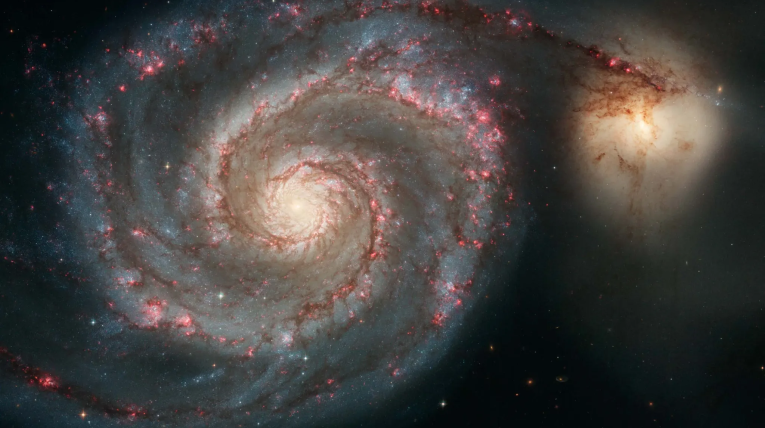Move over, Halley’s Comet! This year, a different celestial visitor takes center stage: the “Devil Comet,” also known as Comet 12P/Pons-Brooks. While not as famous as its 76-year orbiting counterpart, the “Devil Comet” offers a captivating spectacle, gracing Earth’s skies. This year is your chance to witness it! Join us as we delve into the fascinating history of this comet, its potential for dazzling displays, and how you can observe it in 2024. Buckle up for an exciting journey through the cosmos!
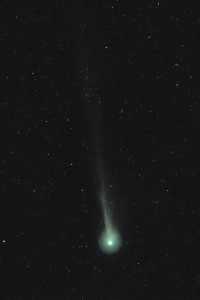
Credits: Steven Bellavia
The Comet 12P/Pons-Brooks
Discovered in 1812 by Jean-Louis Pons and rediscovered in 1883 by William Robert Brooks, Comet 12P/Pons-Brooks, also nicknamed the “Devil Comet,” is a dazzling periodic comet gracing Earth’s skies roughly every 71 years. The “12P” designation signifies it was the 12th comet with a charted orbit, and “P” stands for periodic, referring to comets orbiting the Sun in less than 200 years. A periodic comet is a comet that follows a predictable and repeating orbit around the sun.
The Devil Comet 12P/Pons-Brooks is composed of various elements and compounds commonly found in comets. These include dust, ice (primarily water ice), rocky material, and volatile gases such as carbon monoxide, carbon dioxide, methane, and ammonia. Comets like 12P/Pons-Brooks are often referred to as “dirty snowballs” due to their composition of ice and dust. When these comets approach the Sun, the heat causes the volatile substances to vaporize, creating the characteristic coma and tail that are visible from Earth.
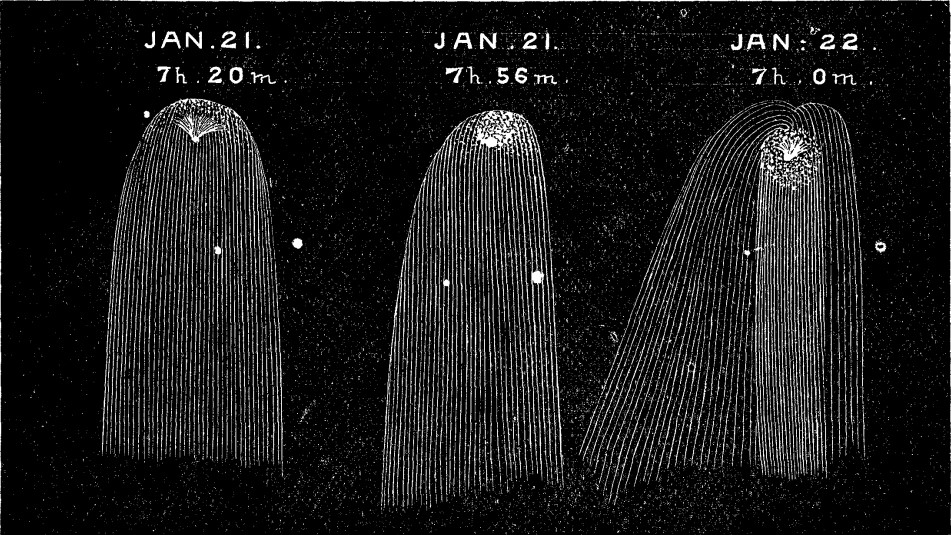
The History of Comet 12P/Pons-Brooks
Discovered by Jean-Louis Pons on July 12, 1812, Comet 12P/Pons-Brooks boasts an orbital period of about 70 years, later refined to 70.68 years by Johann Franz Encke. William Robert Brooks accidentally identified the faint comet on September 2, 1883, linking it to the 1812 discovery.
The comet underwent a spectacular outburst from September 21-23, 1883, transforming from a diffuse glow to a star-like appearance and brightening from magnitude 10–11 to 8–8.5. By November 20, it was visible to the naked eye, reaching a dazzling magnitude of 3. Noteworthy outbursts occurred on January 1 and January 19, 1884, reaching perihelion below Iota and Beta Ceti around January 24. The comet’s celestial journey through our solar system concluded in June 1884.
Repeating history?
Comet 12P/Pons-Brooks has once again graced our night sky with a luminous outburst, echoing a historical brilliance that captivated astronomers and stargazers in the 19th century. The comet was around magnitude 16 before rapidly brightening to magnitude 11 on July 20.
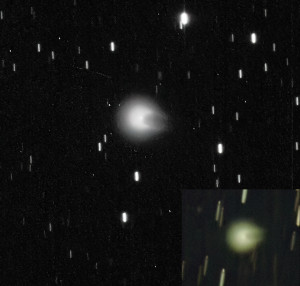
What causes the explosive burst, and why does the comet look so peculiar?
According to our understanding, the core of Comet 12P/Pons-Brooks contains icy magma rich in methane, called Cryo-magma. When solar heating weakens the comet’s outer layer, the dissolved CO and CO2 burst out explosively, releasing a mix of fresh dust, rock, and ice. Comets with long rotation periods, experiencing extended exposure to sunlight, are more susceptible to these eruptions. The eruption site closes during the cold nights, only to reopen for another burst during the next cycle.
How to see the comet 12P/Pons-Brooks?
As March progresses, the comet will speed up and brighten, reaching proximity to Jupiter from April 12-14. Its perihelion, the closest point to the sun, is set for April 21 in the constellation Taurus. Following perihelion, the devil comet will gradually vanish from sight in the Northern Hemisphere, becoming dimmer when closest to Earth on June 2, 2024, due to increased distance from the sun.
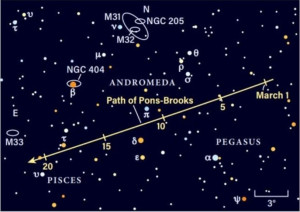
If you have a large telescope, you can spot the comet now from the Northern Hemisphere. Otherwise, you can wait for it to get closer and brighter. And, you might even see the comet during the total solar eclipse on April 8, 2024!
You can see the real-time position of the comet here.
The captivating Comet 12P/Pons-Brooks, with its explosive outbursts and historical appearances, returns to grace our night sky. This rare opportunity is yours for the taking!
Escape the city lights and seek out pristine skies for the best view. Explore our blog to discover the perfect stargazing spots in Maharashtra and India. Alternatively, join our upcoming star party visit Stargazing Mumbai to share this celestial experience with fellow enthusiasts.
Don’t miss this once-in-a-lifetime chance to connect with the cosmos and witness the “Devil Comet” in all its glory!
Try out the Sky live Simulator to track the comets as per your need : Skylive



